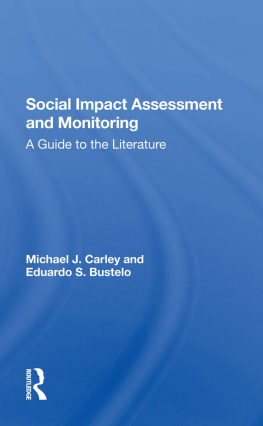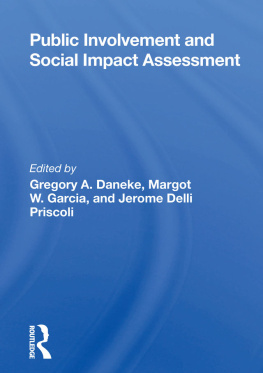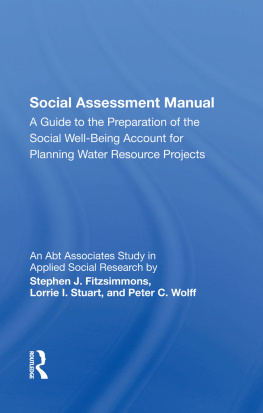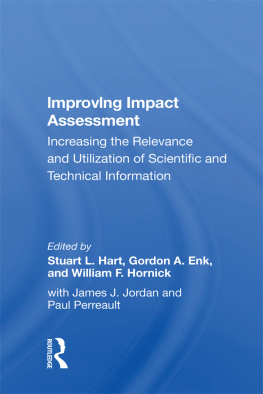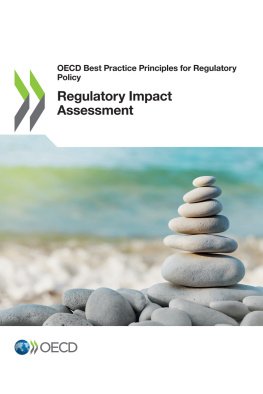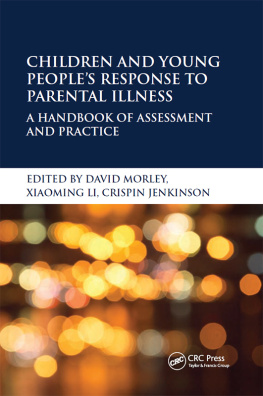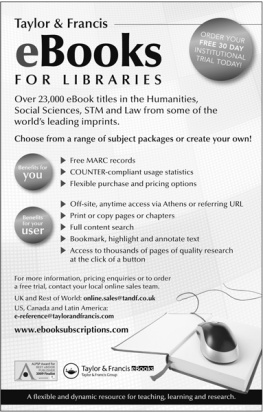Social Impact Assessment arid Monitoring
Other Titles in This Series
Public Involvement and Social Impact Assessment, edited by Gregory A. Daneke, Margot W. Garcia, and Jerome Delli Priscoli
Integrated Impact Assessment, edited by Frederick A. Rossini and Alan L. Porter
Cultural Resources: Planning and Management, edited by Roy S. Dickens and Carole E. Hill
Environmental Mediation: The Search for Consensus, edited by Laura M. Lake
The Socioeconomic Impact of Resource Development: Methods for Assessment, F. Larry Leistritz, Steve H. Murdock, and Rita R. Hamm
What Happened to Fairbanks? The Effects of the Trans-Alaska Oil Pipeline on the Community of Fairbanks, Alaska, Mim Dixon
Women and the Social Costs of Economic Development: Two Colorado Case Studies, Elizabeth Moen, Elise Boulding, Jane Lillydahl, and Risa Palm
The ELF Odyssey: National Security Versus Environmental Protection, Lowell L. Klessig and Victor L. Strite
Guide to Social Impact Assessment, Kristi Branch, Douglas a. Hooper, James Thompson, and James Creighton
Applied Social Science for Environmental Planning, edited by William Millsap
Also of Interest
Socioeconomic Impact Management: Design ana Implementation, John M. Halstead, Robert A. Chase, Steve H. Murdock, and F. Larry Leistritz
Public Reactions to Nuclear Power: Are There Critical Masses? edited by William R. Freudenburq and Eugene A. Rosa
Hazardous Waste Management: In Whose Backyard? edited by Michalann Harthill
Available in paperback only.
Social Impact Assessment Series
C. P. Wolf, General Editor
Social Impact Assessment and Monitoring: A Guide to the Literature
Michael J. Carley and Eduardo S. Bustelo
This systematic, critical review of more than 600 recent publications in social impact assessment (SIA) and related fields is based on the authors' belief that SIA is more than an analytical technique--it is also a logical and timely response to our ever-growing need for more and better information to facilitate decision making in an increasingly complex world. SIA falls within the broad range of policy analysis and the policy sciences, and its response to policymaking problems tends to be an interdisciplinary effort on the part of political scientists, planners, sociologists, economists, anthropologists, engineers, psychologists, and many others. The authors' guide to the literature clearly reflects the cross-disciplinary aspects of the issues, problems, and methods of SIA: Throughout they stress that the ability of practitioners to integrate and make use of information from a wide variety of disciplines and sources will mark the development of the field.
Michael J. Carley is currently a research fellow at the Policy Studies Institute in London. He has been a planning consultant in the field of social policy analysis and impact assessment in Canada and elsewhere, including the National Centre for Human Resources in Brazil. He is the author of Rational Techniques in Policy Analysis and Social Measurement and Social Indicators. Eduardo S. Bustelo is currently program and planning officer for UNICEF in Brazil. He has been a consultant in the area of mathematical models for socioeconomic planning for the Economic Commission for Latin America (CEPAL). He has also been a university professor and is the coeditor (with Ray Bromley) of Techniques Versus Politics in Planning and the author of articles in academic journals.
Social Impact Assessment and Monitoring
A Guide to the Literature
Michael J. Carley and Eduardo S. Bustelo
First published 1984 by Westview Press, Inc.
Published 2019 by Routledge
52 Vanderbilt Avenue, New York, NY 10017
2 Park Square, Milton Park, Abingdon, Oxon OX14 4RN
Routledge is an imprint of the Taylor & Francis Group, an informa business
Copyright 1984 Taylor & Francis
All rights reserved. No part of this book may be reprinted or reproduced or utilised in any form or by any electronic, mechanical, or other means, now known or hereafter invented, including photocopying and recording, or in any information storage or retrieval system, without permission in writing from the publishers.
Notice:
Product or corporate names may be trademarks or registered trademarks, and are used only for identification and explanation without intent to infringe.
Library of Congress Catalog Card Number: 84-51589
ISBN 13: 978-0-367-28755-9 (hbk)
Contents
- PART 1
FOCUS ON SOCIAL IMPACT ASSESSMENT - PART 2
SOCIAL IMPACT ASSESSMENT IN AN INTERDISCIPLINARY PERSPECTIVE - PART 3
SOCIAL ASSESSMENT IN DEVELOPING COUNTRIES - PART 4
OTHER SOURCES OF INFORMATION
The following literature review is designed and organized so as to be of direct practical use to students of social impact assessment, teachers in universities, organizers of short courses, and perhaps most importantly, to civil servants, consultants, and other practitioners of the art. It is based on the premise that social impact assessment (SIA) is not so much a technique of analysis, but rather a logical and timely response to the ever growing need for full and open information and involvement in the decision-making process. As such, SIA falls within the wider interests of policy analysis which is a topic of great interest to the authors. SIA as a response to a policy-making problem, therefore, comes from a wide variety of disciplines, indeed, it is hard to imagine impact assessment that wasn't an interdisciplinary effort on the part of planners, economists, sociologists, anthropologists, engineers, community development workers, and many others. For this reason, this document is first and foremost a cross-disciplinary perspective on the issues, problems, and methods of SIA. Throughout the course of this review, we will stress that the development of SIA, as a political and methodological problem area, will be marked by the capacity of the field to integrate and make practical use of sources from a wide variety of disciplines. To assist this integration is our intention and we hope that this effort will make some contribution to the further development of an exciting field.
Organization and Criteria
This literature review begins with a description of social impact assessment and a consideration of some of the important political and methodological issues in the field. Following that, each individual section, as listed in the table of contents, begins with an introduction to that particular aspect of SIA. The introductions to sections dealing specifically with SIA tend to be shorter as most points have been covered in the beginning description. Conversely, other sections may have more lengthy introductions as needed.
The "basic reading" references are those we feel will be of interest to, and accessible to, a wide audience. For the teacher these basic references would be useful additions to reading lists, for students they constitute an introduction to the field, and for practitioners they provide a lot of useful information in a fairly readily digestible form. The "further references" constitute more of an in-depth look at the particular topic. As such, they may be conceptually and technically more complex, or the language or presentation more difficult. They may be less readily available, or in some cases, we may feel that these references will only apneal to a narrower audience.

